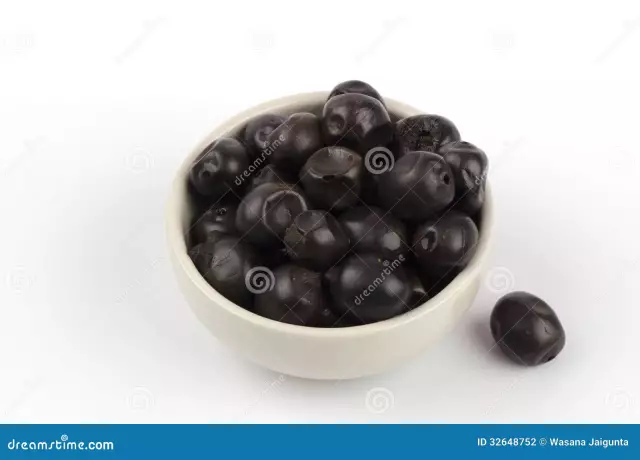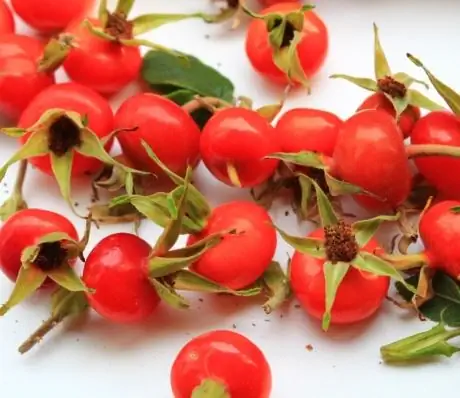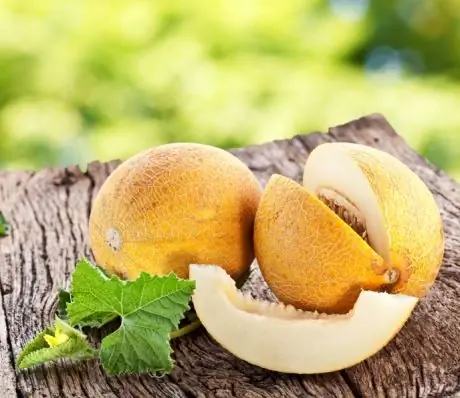- Author Rachel Wainwright [email protected].
- Public 2023-12-15 07:39.
- Last modified 2025-11-02 20:14.
Vitex sacred
Instructions for use:
- 1. Chemical composition
- 2. Useful properties
- 3. Indications for use
- 4. Contraindications
- 5. Home remedies

Vitex sacred (Vitex ordinary, Abraham's tree, common twig, monk's pepper, monk's pepper, tree of purity) is a perennial tree-like shrub of the Vitex genus of the Lamiaceae family, reaching up to 8 meters in height. It has smooth, long, erect tetrahedral stems, which, when broken, emit a sharp spicy aroma. On the leaves adpressed, densely tomentose, silky and soft pubescence. Leaves are compound, rounded, lanceolate with finger-like articulation, gray-green, glabrous above, pubescent below. The flowers are five-petal, small, purple-purple in color, gathered in lush inflorescences - spike-shaped panicles, reaching 20 cm in length. Fruits are juicy drupes up to 5 mm in diameter, collected in loose cobs. Initially, each fruit is red in color, but as it dries it turns gray-black or black,similar to a pea of black pepper.
Sacred Vitex is not a pharmacopoeial plant, but in the Register of Medicines of the Russian Federation there is a clinical and pharmacological article, according to which the extract of the common rod is a means that normalizes the content of sex hormones and is used in the form of the following medicines: Mastodinon, Cyclodinon, Agnucaston.
Also, monk pepper is listed in the Register of Medicines as a homeopathic remedy under the Latin name Agnus castus.
The Abraham tree is approved for use as a dietary supplement, it is part of some vitamin and mineral complexes.
Vitex sacred is a UK pharmacopoeial plant.
Chemical composition
All parts of the common prutnyak contain the following biologically active substances:
- essential oils, which include sabinene, cineole, pinene, linolen and organic acids, including butyric, formic, nylon, palmitic, propionic, acetic and valerian;
- flavonoids (casticin, kaempferol, isovitexin, isoorientin, orientin, querzatagetin);
- iridoids (aucubin, agnoside);
- tannins;
- alkaloids;
- vitamins;
- trace elements.
In some parts also found:
- leaves: glycoside agnuside and ascorbic acid;
- fruits: coumarins;
- seeds: fatty oil and flavonoid casticin.
The essential oil from the fruits of sacred vitex contains palmitic acid, cineole, pinene, sabinene, etc., from the leaves - bornyl acetate, limonene, sabinene, cineole, α- and β-pinenes, n-cymene, camphor, linimol, quinone, palmitic acid.
Beneficial features
The main studies of the medicinal properties of the common prutnyak were carried out by German scientists. According to their results, the plant extract has a similar effect to progesterone, promotes the production of follicle-stimulating hormone, and stimulates the release of luteinizing hormone.
Vitex ordinary contains recombinant dopamine receptors, has dopaminergic activity, suppresses prolactin secretion by binding D 2 -dopaminergic receptors of the pituitary gland.
Scientists confirm its anti-inflammatory, antimicrobial, sedative, disinfecting, antifungal and analgesic properties.
Vitex sacred extract reduces prolactin levels, which in turn regulates sex hormones and gonadotropins. And, as you know, prolactin, being a stress hormone, affects the emotional behavior of a person. An increased concentration of this hormone can lead to menstrual irregularities and mastopathy.
This plant is included in a number of medicines and dietary supplements (BAA):
- The drug "Agnucaston" - for the treatment of dysmenorrhea, mastodynia, ovarian dysfunction and premenstrual tension syndrome.
- The drug "Mastodinon" - as a symptomatic remedy for premenstrual syndrome, menstrual irregularities, fibrocystic mastopathy and infertility caused by insufficiency of the corpus luteum.
- The drug "Cyclodinone" - for the normalization of menstrual irregularities, treatment of mastodynia and premenstrual syndrome.
- BAA "Mirazenova" - for the treatment of premenstrual syndrome, dyspareunia (pain during intercourse), correction of psychoemotional disorders due to uncomplicated stress insomnia (insomnia).
- BAA "Mastofit" - for the treatment of mastopathy.
- Vitamin and mineral complex "Pregnoton" - for the complex treatment of diseases of the female reproductive system.
Indications for use
Sacred Vitex is widely used in folk medicine.
It is often used to treat gynecological conditions such as:
- hormonal imbalance;
- premenstrual syndrome, accompanied by edema;
- scanty or no menstruation;
- anovulatory cycles;
- cycle disorders after using contraceptives;
- infertility associated with hyperprolactinemia;
- climacteric syndrome.
Alcoholic tincture of common rod is also useful for men, since it helps to treat spermatorrhea (premature ejaculation) and increased sexual excitability, as well as sexual impotence (impotence). Women take it to stop lactation.
Alcohol tincture is recommended to be taken with a depressed mood, insomnia, headaches and neuroses.
Decoctions of the plant are drunk for various diseases of the liver and spleen, for malaria, gonorrhea.
Outwardly, infusion of sacred vitex is used to treat various skin diseases and urticaria, as well as for wound healing.
The essential oil is recommended to massage into the lower abdomen to prevent the symptoms of premenstrual syndrome and eliminate hot flashes caused by menopause.
Contraindications
The only strict contraindication to taking Vitex sacred preparations is individual intolerance. However, there is insufficient data on the safety of using the plant in children, pregnant and lactating women.
It is not recommended to use the common twig in case of breast cancer, because it has not been reliably established how it affects the level of estrogen in this oncological disease.
Vitex essential oil should not be taken internally.
Treatment should be carried out in short courses, because cases of liver damage are known in patients who have been taking Vitex preparations for a long time (more than 26 weeks).
Home remedies from sacred Vitex
- remedy recommended for liver diseases: pour 50 g of ripe fruits with 0.5 l of vodka, insist and strain for 2 weeks. Take 10 drops half an hour before meals for 3 months;
- tincture used for menstrual irregularities: 3 tbsp. l. pour 0.5 l of vodka on dried leaves, insist in a dark place for 14 days, shaking the container occasionally, and strain. Take 15 drops 3 times a day during menstruation for 6 months;
- infusion for the treatment of female infertility: 2 tbsp. l. pour 1 liter of dry raw materials, boil in a closed saucepan for 20 minutes, cool and strain. Take 1 glass 4 times a day in the second phase of the menstrual cycle for 3-4 months;
- remedy for the treatment of headaches: pour 50 g of ripe fruits with 0.5 liters of vodka, insist and strain for 2 weeks. Take 30 drops for headaches.
Information about the drug is generalized, provided for informational purposes only and does not replace the official instructions. Self-medication is hazardous to health!






